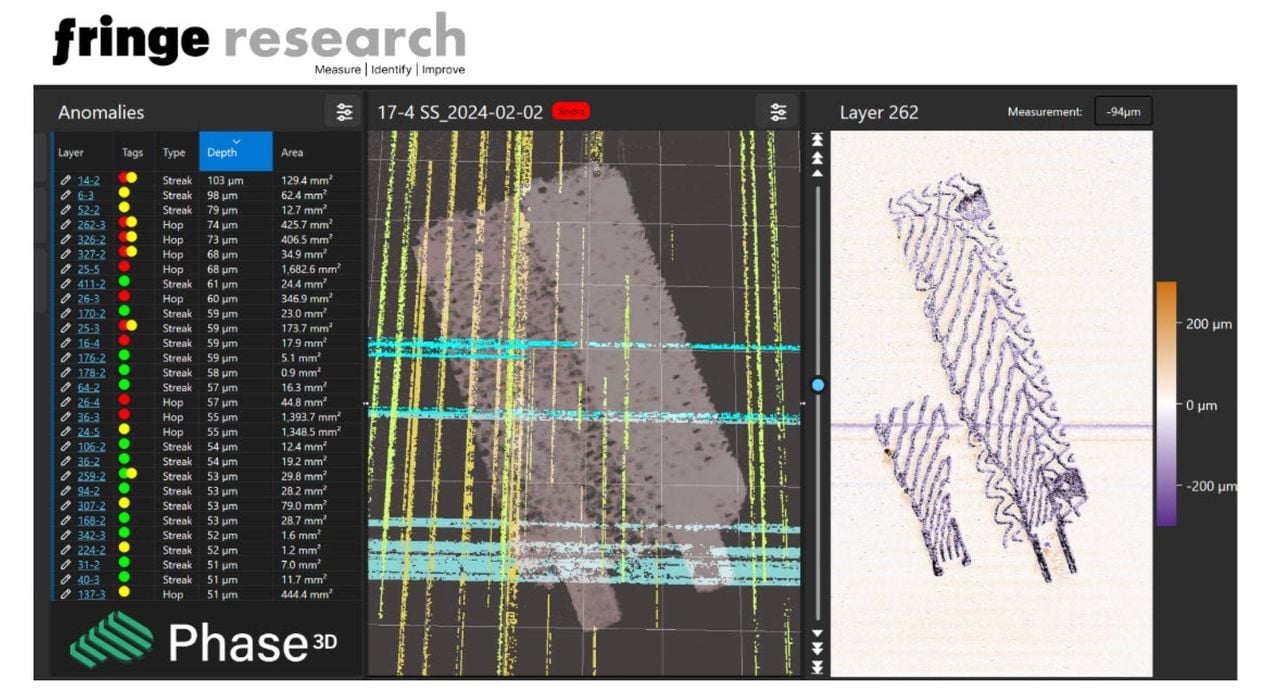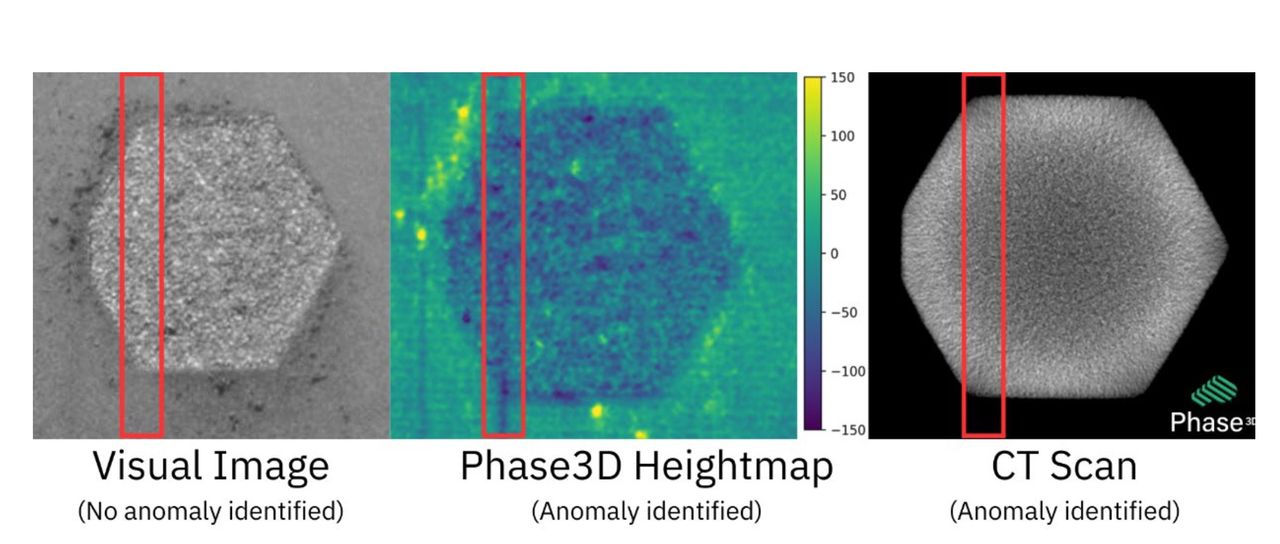
Phase3D introduced a new service that’s able to detect defects in metal 3D prints — while printing.
With the introduction of metal 3D printers, the space shifted dramatically from a world of non-critical prototype parts to one where metal parts are used for end-use applications, and produced in volume. That meant that the quality of parts must be assured.
There are many approaches to quality control, but typically produced parts are inspected after the fact to ensure they meet the requirements to proceed.
Typically those specifications require minimum strength, and in metal parts, that’s determined primarily by the microstructure of the material. As the metal cools during printing, it crystallizes, forming the microstructure. Poor quality microstructures and gaps can cause unexpected part weakness, and that’s undesirable. For many production applications, it means that the part must be rejected entirely, causing aa tremendous waste of material, print time and post processing efforts.

Enter Phase3D, a relatively new software company that has taken on this challenge. They’ve developed something they call “Fringe Research”, which is able to detect flaws in 3D prints — while the print is ongoing.
Surprisingly, Fringe doesn’t use either AI or Machine Learning techniques, as they opt for more conventional algorithms. It seems that it requires the installation of a sensor in the build chamber, which apparently is compatible with a wide range of devices.
The sensor fires up three times during each layer of the print, and the imagery collected is analyzed by the software. A report is presented showing all unexpected gaps and flaws while the print proceeds. You can see a representation of the report at top.
Their system has been measured against traditional CT scanning, and quite favorable results were found. Phase3D writes:
For Ti64 printed on an EOS M290 for the U.S. Air Force:
- 81% of Fringe Research identified anomalies correlated to part defects detected by CT
- 100% of Fringe Research identified anomalies ≥47um depressions correlated to defects detected by CT
For GRCop-64 on a Colibrium Additive (previously GE Additive) M2 for NASA:
- 83% of test specimen identified defects were correlated to layers with Fringe Research identified anomalies
- 100% of Fringe Research identified anomalies ≥42um depressions correlated to defects detected by CT
That’s quite impressive, and it leads to a very powerful capability: the ability to stop a print job immediately when a flaw is detected. This avoids wasting valuable print time and expensive metal powder material, to say nothing about eliminating the post processing steps, which are time consuming and expensive.
Instead, the operator can review the report and make suitable parameter adjustments before re-running the job. Hopefully it will work more successfully the second time through.
Savings of this type can be extremely valuable: no customers are paying for failed prints, they pay only for correctly made parts.
The report will also greatly assist 3D print operators who, after seeing many reports, will gain a far better understanding of why their prints may be failing. In theory this could lead to updated best practices for tuning print jobs.
This could be a popular accessory for production metal 3D printing operations.
Via Phase3D
